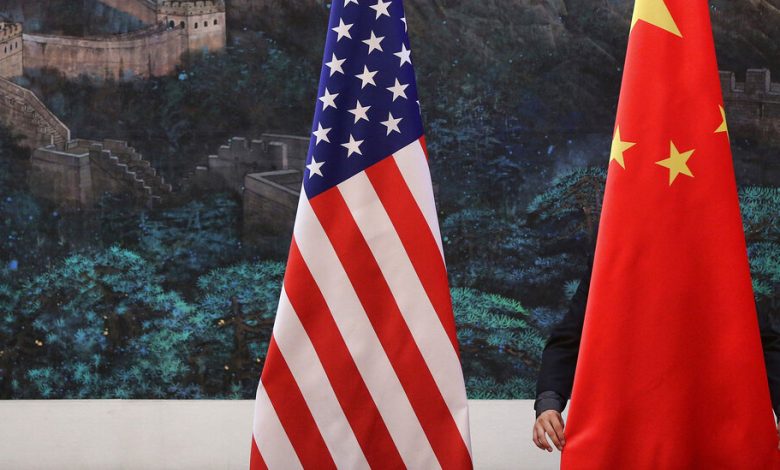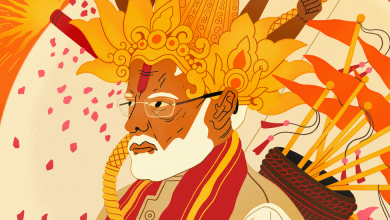Farewell to the U.S.-China Golden Age

A lunch meeting about China this summer at the Upper East Side headquarters of the Council on Foreign Relations felt more like an Irish wake.
A crowd that included gray-haired China hands and not-so-gray-haired tech executives shared memories of their years in the Middle Kingdom as diplomats, entrepreneurs and English teachers in the countryside. One attendee recalled how the car of Warren Christopher, then deputy secretary of state, was attacked by a mob in Taipei, Taiwan, after U.S. officials announced that Washington would re-establish diplomatic relations with Beijing. Another told stories about living for years in Beijing as a translator, brand strategist and freelance music critic on a “dodgy visa” that the Chinese government would never give out today. They were all keenly aware that they had lived through an extraordinary period of warm relations that is now gone, perhaps forever.
“We were privileged to live in China during a remarkably free and open period of time, to learn the language, make friends, find spouses, and some for a while could even own property,” Ian Johnson, a journalist who has contributed to The New York Times and who lived in China for two decades, told me later. “It’s very different now, especially for grad students and journalists, but also for tourists. China has closed itself off.”
The nostalgia was poignant but the gathering was also notable for what it represented. The Council on Foreign Relations, of which I am a member, is a sort of brain trust for the country’s foreign policy establishment — a repository for the wisdom accrued by Americans who have lived and worked around the globe. That lunch meeting underlined the fact that China was turning into something they hadn’t expected — and slipping out of their reach. At the very time when understanding China has become more important than ever, they were losing visibility, access and insight, thanks to increasing repression in China and new restrictions enacted by the United States. There was nothing to be done. It was out of their hands. A melancholy camaraderie filled the room. It felt like the end of an era.
When Zongyuan Zoe Liu, a fellow at the council, polled the group about who planned to return to China, fewer than half raised their hands. Between Chinese Communist Party raids of the offices of American consulting companies and threats of congressional subpoenas of American businesses that work in China, some felt it was simply too dangerous.
Only about 350 American students are studying in China today, down from some 15,000 in 2015. The Fulbright program in China, canceled by President Donald Trump, has stayed canceled. And a key agreement on science cooperation — the first major agreement that the United States signed with China after diplomatic relations were established — was almost allowed to expire this year, and even so was renewed for only six months. That doesn’t bode well for future relations. Those exchanges are the glue that keep populations on good terms, even when their leaders are not.
It’s not clear how far Presidents Biden and Xi Jinping will go to re-establish those kinds of ties when they meet in San Francisco on Wednesday on the sidelines of the annual Asia-Pacific Economic Cooperation conference. Both leaders have taken steps to reduce tension since the summer. But the hard reality remains: The United States and China, the two most powerful nations in the world, are bound to butt heads in this new era and nobody knows how acrimonious it is going to get.
During the golden years, American policymakers rooted for China’s economic success and worried about the risks that a failed and starving China would pose for the world. These days, American policymakers look for ways to frustrate China’s ambitions, worried about the risks a successful but still authoritarian China poses for the world.
Jan Berris, vice president of the National Committee on U.S.-China Relations, who was hired to help host the groundbreaking visit of the Chinese Ping-Pong team in 1972 and has helped host Chinese delegations ever since, told me that Americans have yet to adjust to the new reality of a world in which the United States “is not always going to be on top.”
“One of the things that really irritates Chinese, ordinary citizens and officials alike, is that many Americans continue to think of them as the younger brother,” she said. “Well, they’ve grown up and they’ve proven to the world that they can do things quite well by themselves and they don’t need us to tell them what to do.”
During the good old days, China’s economy was growing so fast that American investors saw opportunities everywhere. When Jack Perkowski moved to China in the 1990s to start the auto parts company Asimco, horse-drawn wagons still plodded along a two-lane road that led to Beijing’s international airport, according to his book “Managing the Dragon: Building a Billion-Dollar Business in China.” Back then, China needed everything — capital, technology, corporate governance experience. By the time Mr. Perkowski returned to New Jersey in 2020, China had all those things in spades. Today, it is much harder for Americans to compete. “China’s got more capital, frankly, than a lot of companies in the United States,” he told me.
China has gone from a poor country that was deeply insecure about its place in the world to one that is wealthy and confident — too confident, in fact. China’s neighbors have started getting nervous.
These days, Mr. Perkowski said, it is his home country that is burdened by insecurity. China is 10 years ahead of the United States in the electric vehicle battery business, but the U.S. government is so worried about relying too heavily on China that it is putting new restrictions in place that curb partnerships with Chinese battery companies. Mr. Perkowski wants to bring Chinese know-how to help build the electric car battery industry in the United States, just as he took U.S. management know-how to China to build up an auto parts industry decades ago. He’s even teamed up with Bob Galyen, who spent years building China’s electric vehicle industry, to do it. But the politics of this new era make that difficult.
If China has changed, so too has the United States. In the golden years of the relationship, the U.S. system of nearly unfettered capitalism and representative self-governance was a model for much of the world. Today it is a showcase of political sclerosis, reactionary populism and a nearly unbridgeable gap between rich and poor.
As if more evidence was needed, Mr. Biden will meet with Mr. Xi as his own government prepares for the possibility of a shutdown over impasses about how to keep the lights on. San Francisco, the host city, has cleared some of its homeless encampments in advance of Mr. Xi’s visit, but that’s not fooling anybody.
Mr. Xi is preoccupied with problems of his own, including an economic slump set off in part by his own relentless crackdown on the private sector, which has scared away foreign investors. China just posted the first deficit in foreign direct investment since 1998, the year that it started collecting statistics. During the golden years, China took double-digit growth for granted. No longer. Mr. Xi is also expected to address some of the world’s most powerful C.E.O.s in San Francisco and is likely to remind them that China is once again open for business. Whether he’ll be able to win anybody over remains to be seen.
The limits and possibilities of this new era are still being defined. We can only hope that a few decades from now, people will gather at the Council on Foreign Relations and toast a new generation of leaders who got things right.
The Times is committed to publishing a diversity of letters to the editor. We’d like to hear what you think about this or any of our articles. Here are some tips. And here’s our email: [email protected].
Follow The New York Times Opinion section on Facebook, Twitter (@NYTopinion) and Instagram.




